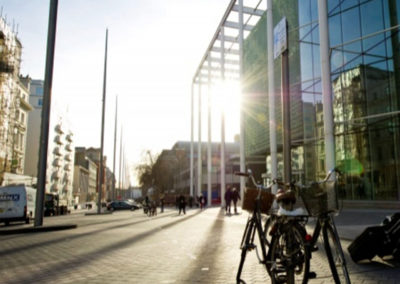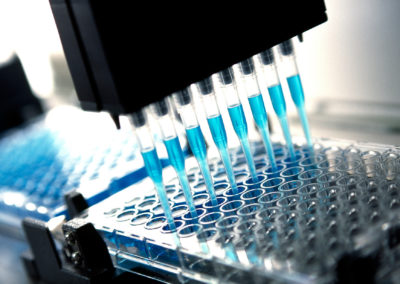Bio-Inspired Aerial Robotics
Dr Mirko Kovac is Director of the Aerial Robotics Laboratory at Imperial College London, and Senior Lecturer in Aero-structures. His research focuses on the development of biologically inspired flying robots for distributed sensing of air and water, search and rescue plus autonomous repair and construction.
Physical traits of birds, insects and fish provide Dr Kovac (and his team) with a source of inspiration for the design of novel artificial systems that employ (for example) retractable wings, sensitised robotic skins, insect inspired compound eyes, perching or artificial muscles. Their Brahmal Vasudevan Multi Terrain Aerial Robotics Arena also allows them to test in simulated urban environments and extreme conditions.
Some of their recent work includes the AquaMav, SpiderMav and Buildrone featured below.
Scientific advisor role
Alongside his research at Imperial, Dr Kovac also employs his expertise independently as a Scientific Advisor for various organisations including the House of Lords Aerial Robotics consultations, RoboCap Fund, HayBeeSee – and Rewired, a robotics-focused fund and venture studio.
Rewired invests in applied science and technologies to advance machine perception and equip the next generation of smart robots. They help organisations develop biologically inspired technologies that enable robots to cope with real-world environments, make good decisions in real time, and help humans do more with less.
“Rewired’s goal is to progress smart robotics for the benefit of everyone – businesses, researchers, and end users,” said Dr Kovac. “They understand the critical advancements necessary to get robotics out of the lab and into the real world, and that’s why I’m happy to be working with them as Scientific Advisor”.
As Scientific Advisor, Dr Kovac counsels the Rewired partners on the scientific and technical development of the studio and their portfolio companies, especially as it relates to aerial and bio-inspired robotics. He also aids in nurturing the development of the portfolio companies’ robotic applications.
“Mirko’s experience leading the Aerial Robotics Lab gives him the scientific and practical insights that help us identify and nurture the most promising applications of smart robotics,” said Rewired General Partner Santiago Tenorio.
The company invests in a diverse group of hardware and software companies who are developing novel sensor systems, new modalities of data, new approaches to machine vision, autonomous navigation, and a wide range of supporting technologies in artificial intelligence and machine learning.
Learn more about Dr Kovac and his work with Rewired.
Read more on…
AQUAMAV
Flying fish, flying squid, diving birds and diving insects have evolved so they can successfully transition between water and air, and move around in both. Using the underlying design principles of these multimodal animals, Dr Kovac has created a robotic equivalent, the Aquatic Micro Air Vehicle (AquaMAV). This aerial-aquatic robot employs a plunge diving strategy for water entry, folded wings for diving efficiency, water jet propulsion for water take-off and hydrophobic surfaces for water shedding and dry flight. Applications include distributed water quality monitoring, search and rescue operations and underwater exploration.
SPIDERMAV
One of the main challenges for aerial robots is the high-energy consumption of powered flight, which reduces their utility for sensing and inspection tasks. By perching on structures they can save energy and maintain a high, stable observation or resting position. Birds and insects have mastered the ability to perch successfully and have inspired perching robots of various sizes.
BUILDRONE
Dr Mirko Kovac and team scooped the national category award at the UAE Drones for Good competition in Dubai with Buildrone. This airborne robot not only takes take sensor readings to detect leaks, but can distribute polyurethane foam in liquid form, mid-flight, to effectively repair potentially dangerous leaks on-site and in real time, without risk to its human operators.
Find out more about other research areas in the aerial robotics lab at imperial college london.
Read more on imperial’s expertise in ai, drones and robotics.
Share post:
Related case studies

Exhibition Road Showcase
Our consultants shared their expertise in traffic monitoring and evaluation for the Royal Borough of Kensington and Chelsea when they began work on the Exhibition Road shared space scheme. read more

New early warning system for European debt default
Capco, a global business and technology consultancy dedicated solely to the financial services industry, has today unveiled a new early warning system for European debt default, resulting from a project facilitated by Imperial Consultants. read more

Neuropathic pain drug development
Our consultants shared their expertise in neuropathic pain area treatments to support Spinifex’s drug discovery and development programs. read more
